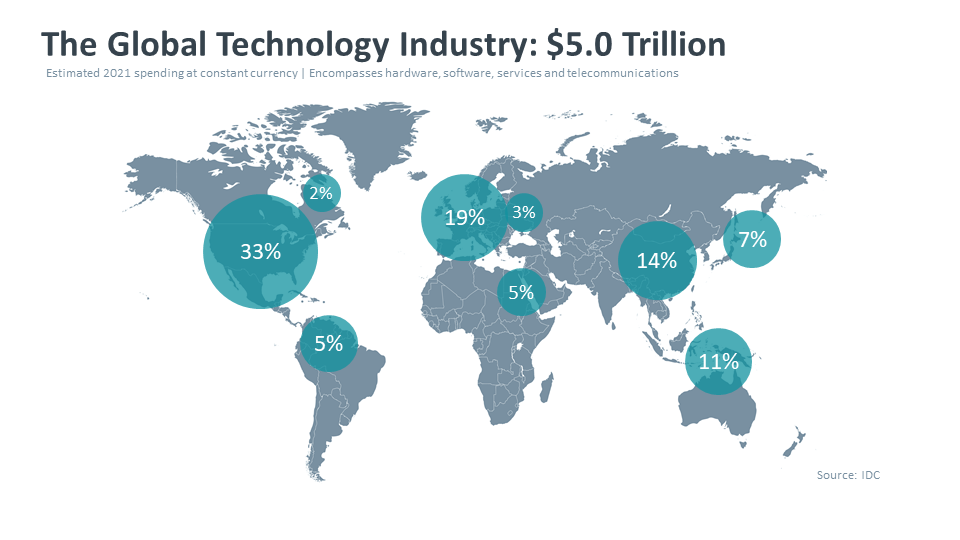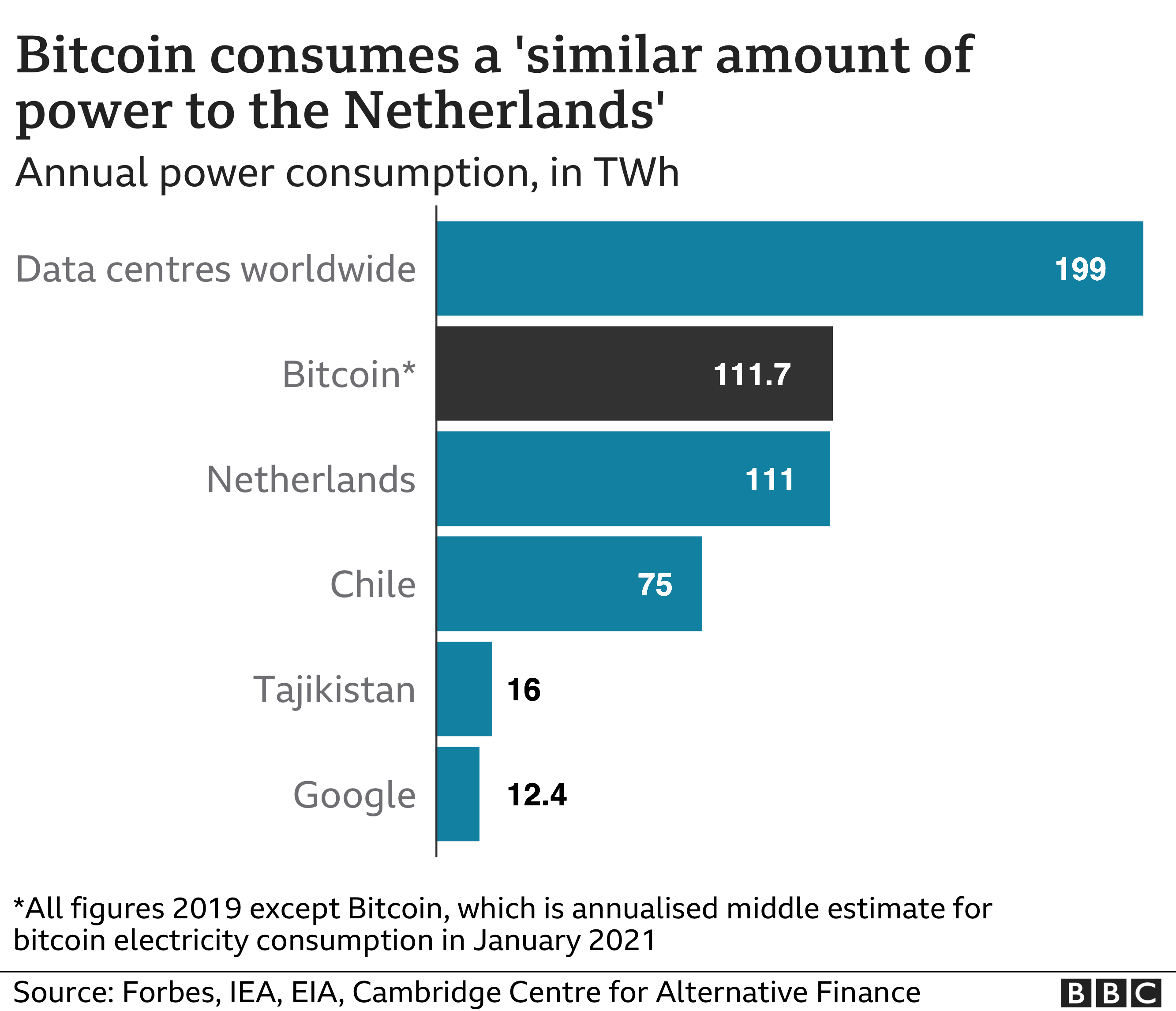Pollution and Renewable Energy in Tech – Where Does the Industry Stand?
The large five Tech companies contribute up to 0.3% of global greenhouse gas emissions. Source: Washington Monthly
16 July 2021 – by Eric Koons Comments (0)
Over the past 20 years, Tech companies have changed many aspects of our world. From how we travel to where we shop and how we work. In many ways, these changes have been revolutionary, yet they do come at a cost. The Tech industry is expected to reach a value of USD 5 trillion in 2021, and with this growth has come increased demand for energy. Some Tech companies have anticipated this growth and are compensating with renewable energy, yet many are not.

Energy consumption is both one of the most important and trickiest areas for Tech companies. On the one hand, every part of the business needs energy (and a lot of it), but on the other, the energy consumption is so high that it needs to be affordable and reliable.
Tech’s Growing Demand For Energy
Tech permeates every part of our life, and its impact on global energy consumption is very noticeable. The internet as a whole is one of the world’s largest energy users, using 416.2TWh per year. That’s more per year than the entire United Kingdom. The data centers that route our traffic and run our cloud services account for 1% of the world’s electricity. Plus, a small handful of large Tech companies contribute up to 0.3% of global greenhouse gas emissions. Cryptocurrencies are also known for their energy hunger. Bitcoin is estimated to consume approximately 110TWh per year or 0.55% of the world’s energy.

Slow Adoption of Renewable Energy Technologies by Tech Companies
For an industry with such an enormous impact on the world’s energy consumption, many Tech firms have been slow to adopt alternative energy options. Initial projects were non-direct, financial programs such as carbon offsets and power purchase agreements (PPAs). By 2020, only 3.5% (around 7.2GW) of renewable energy projects worldwide were for US-based Tech companies.
And while change is happening in American and European firms, it wasn’t initially driven by an altruistic desire to ‘be greener.’ It was often the staff in the companies that demanded change towards a greener company. And to keep their highly skilled and in-demand workers, many Tech firms started exploring clean energy as part of their overall corporate sustainability strategies.
If you think US firms are slow, they are light years ahead of China. In a country that held 23% of the world’s data centers in 2019, only 13 of the 22 biggest tech companies had begun to use renewable energy by 2020 – up from only 8 in 2019. And even then, these are mainly through PPAs instead of direct investment. But change is happening in Chinese tech companies too. As energy consumption is expected to grow by 66% between 2019 and 2023, there is much catching up to do.

Energy Challenges in the Tech Sector
Tech giants do face some monumental problems when it comes to curbing their hunger for energy. The top three being:
- Cost of energy
- Energy efficiency
- Energy stability and storage
Only in the past decade has renewable energy become price competitive with fossil fuels. As the cost of manufacturing and deploying renewable energy falls, it has reached grid parity in the US, Europe, and China. New clean energy projects are now consistently cheaper than fossil fuel power plants.
Tech’s Sustainable Innovations
Energy efficiency has often been the first step in moving towards renewable energy, particularly for tech companies. More efficient appliances and processes have been the low-hanging fruit in corporate energy strategies. The innovation in this area was with Microsoft in 2018, where they sealed a small Datacenter and sank it to the bottom of the ocean. For 2 years, the data center performed flawlessly using only the cold ocean for cooling. After being retrieved in 2020, the idea is now being seriously considered.
Renewable energy has always been perceived as unstable due to its reliance on weather. A myth only recently ‘busted’ with the availability of affordable commercial-grade battery energy storage. This cost-effective energy storage has been one of the key breakthroughs in Tech companies embracing clean energy.
APAC is Leading the Battery Energy Storage market
Storage is one of the critical areas where the Asia Pacific (APAC) region leads the charge (pun intended). Australia proved the value of commercial-scale batteries after installing its first commercial grid-connected battery in 2017. The continent is also exploring multiple pumped hydro projects. As of 2020, the APAC accounted for nearly 50% of the world’s battery energy storage projects. Furthermore, in 2025 China is slated to overtake the US in market share for battery storage. A market share worth over USD 3 billion.

Tech is in a Position to Spur Growth in Renewable Energy Adoption
The snowball for clean energy powering Tech is definitely rolling. But its greatest impact may be in the cascade that it creates. Many smaller firms and other industries often look at Tech giants for inspiration and direction. Seeing big Tech companies readily embracing clean energy will likely inspire both smaller Tech firms and other sectors to do the same.
![]()
by Eric Koons
Eric is a passionate environmental advocate that believes renewable energy is a key piece in meeting the world’s growing energy demands. He received an environmental science degree from the University of California and has worked to promote environmentally and socially sustainable practices since. Eric’s expertise extends across the environmental field, yet he maintains a strong focus on renewable energy. His work has been featured by leading environmental organizations, such as World Resources Institute and Hitachi ABB Power Grids.
Read more



